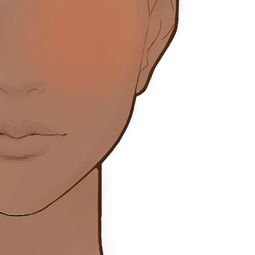Understanding Human Skin Tone: A Comprehensive Overview
Human skin tone is a fascinating aspect of human diversity. It is influenced by a variety of factors, including genetics, environment, and cultural practices. In this article, we delve into the intricacies of human skin tone, exploring its origins, variations, and societal implications.
Origins of Human Skin Tone

The color of human skin is primarily determined by the amount and type of melanin, a pigment produced by cells called melanocytes. Melanin serves as a natural sunscreen, protecting the skin from harmful ultraviolet (UV) radiation. The variation in skin tone across different populations is a result of evolutionary adaptations to varying levels of UV radiation in different regions of the world.
As humans migrated out of Africa, they encountered different climates and levels of UV radiation. Those who moved to regions with high UV radiation, such as near the equator, developed darker skin to absorb more UV radiation and produce more melanin. Conversely, those who moved to regions with lower UV radiation, such as Europe and Asia, developed lighter skin to minimize the risk of UV-induced damage.
Variations in Human Skin Tone

Human skin tone varies widely, ranging from very light to very dark. This variation is often categorized into several distinct skin types, based on the Fitzpatrick Skin Type Scale. The scale ranges from Type I (very fair) to Type VI (very dark). Here is a brief overview of each skin type:
| Skin Type | Description |
|---|---|
| Type I | Very fair skin, often with red or pink undertones. Freckles and burns easily. |
| Type II | Fair skin, with light freckles. Burns easily, tans minimally. |
| Type III | Light to medium skin, with a tendency to burn. Tans moderately well. |
| Type IV | Medium to dark skin, with a low risk of burning. Tans well. |
| Type V | Dark skin, with a very low risk of burning. Tans very well. |
| Type VI | Very dark skin, with a very low risk of burning. Tans very well. |
It’s important to note that the Fitzpatrick Skin Type Scale is not an exhaustive classification of human skin tones. Many people fall outside of these categories, and skin tone can vary within a single individual due to factors such as hormonal changes, aging, and exposure to the sun.
Societal Implications of Human Skin Tone

Human skin tone has significant societal implications, affecting everything from personal relationships to professional opportunities. Here are some key points to consider:
-
Beauty Standards: Many cultures have developed beauty standards that favor lighter skin tones. This can lead to discrimination against individuals with darker skin tones, as well as the use of skin-lightening products.
-
Health Disparities: People with darker skin tones are at a higher risk for skin cancer due to the increased risk of UV-induced damage. However, they may also be less likely to seek medical attention for skin cancer due to a lack of awareness or discrimination.
-
Professional Opportunities: Studies have shown that individuals with lighter skin tones may have an advantage in certain job markets, particularly in industries that value a “clean” or “professional” appearance.
It’s important to recognize that skin tone is just one aspect of human diversity, and that beauty and worth are not determined by the color of one’s skin. By promoting inclusivity and understanding, we can work towards a more equitable and accepting society.
Conclusion
Human skin tone is a complex and fascinating aspect of human diversity. Understanding its origins, variations, and societal implications can help us appreciate the beauty of our differences and work towards a more inclusive world.



